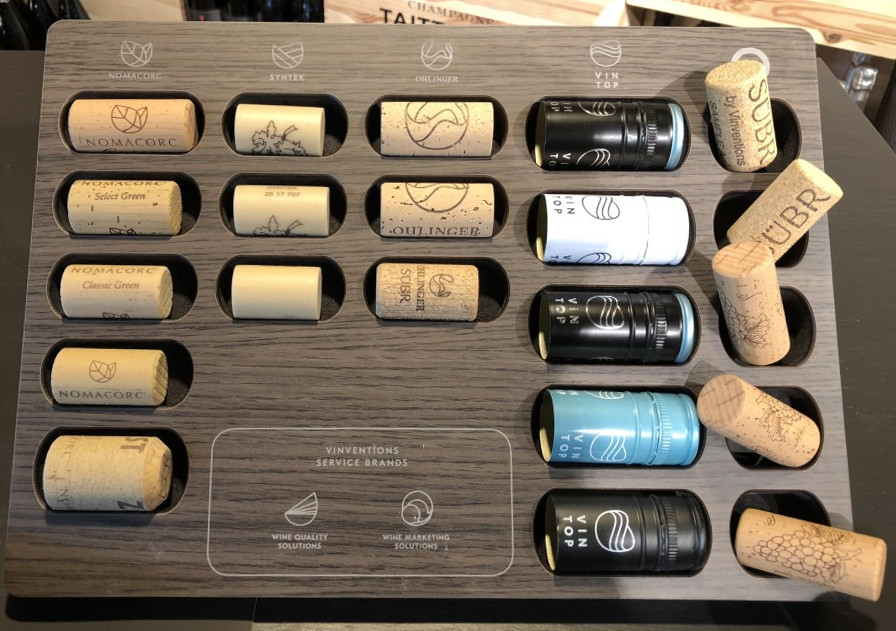
18 Dec Cork or screw top?
Cork or screw top?
The disagreement between fans of natural cork and those who prefer other closure methods, although a recent one, has often led to more ideological choices than practical ones.
Classic cork
The main characteristic of natural cork is that it is permeable to air which is why it is the preferred material for wines that are aged in bottles, like reserve or vintage wines. If you take this specific feature away from corks, you would probably be left with more disadvantages compared to other closure methods.
Some production methods, such as Chianti Classico DOCG, prohibit the use of anything other than natural corks, so you will never find one of these wines with a synthetic cork or a screw top. For most other wines, however, it is the producer who decides which is the best closure method.
Alternative closures
In recent years, a variety of materials and closure methods have arrived on the market, each one with its pros and cons which we are going to analyse. There is, however, one aspect that the wine producer must consider when choosing his bottle closures: the perception of quality by the customer.
When the first screw tops appeared, they were reserved for standard and large bottles of cheap and poor-quality wine. Since Italian wine drinkers have always been bound by the two “cork/quality” factors, wine was only considered “good” if it had a natural cork.
Since then, the situation has changed significantly and the cork/quality factor is not so reliable. These days, you can find both excellent bottles of wine with synthetic corks or screw tops and poor wines with natural corks.
Is the screw top the future?
More and more wine producers are now choosing screw tops even for their best wines, not just for young wines as many people still tend to think. Obviously, we are not talking about any old top, but tops that have been produced with latest-generation technology and the leader in this market is Stelvin. This is why it is increasingly common to hear tops like this referred to as “Stelvin”.
Everyone knows that natural #corks can lead to the problem of the wine tasting of “cork” (TCA) which anyone can recognise. Unfortunately, not many people know that natural cork releases other notes in the wine as well which only an expert can instantly tell come from the cork. In these cases, the wine will be unpleasant with significant flavour changes. If the drinker does not know THAT particular wine really well, he will think that it is a defect of the wine rather than the cork and the next time he will not order that bottle.
Pros and cons
Obviously, even alternative closures have their defects. Let’s ignore synthetic and special corks for the moment, such as Nomacorc, and take a look at the pros and cons of screw tops, like Stelvin.
Pros:
– there is no risk of contamination by the cork.
– smaller concentration of sulphites.
– there are no problems caused by oxidation due to the cork shrinking.
– it is very convenient for restaurateurs or sector-based operators: the problem of wine tasting like “cork” no longer exists and the customer is happy.
– there are studies which show that the oxygen required by wine to age properly is already in the bottle when it is bottled.
Cons:
– you lose the ritual and poetry of pulling the cork, the skill in removing it and the evaluation of the aroma to verify if the wine has been preserved properly.
– long periods of preservation without oxygen could cause problems of reduction. The wine, once opened, needs a few minutes to oxygenate correctly before the aroma is released.
– due to lack of permeability to oxygen, it is not suitable for complex, structured wines which require micro-oxygenation to mature.
In conclusion
One should also bear in mind that the growing demand for natural cork is creating significant problems in the supply of this raw material. This could lead to an overall deterioration in the quality of natural cork and/or an increase in its market price with direct consequences on the final bottle.
Therefore, the disagreement which we mentioned beforehand is far from solved. Fans of natural cork will still get the better of the discussion for several years to come.
Nevertheless, the great dilemma remains. It has always been said that micro-oxygenation can only occur through the pores of natural cork. But what if we were all wrong and the oxygen for proper ageing was already under the cork?


No Comments